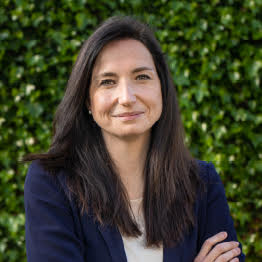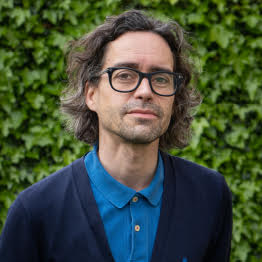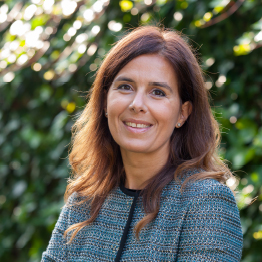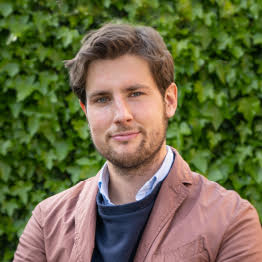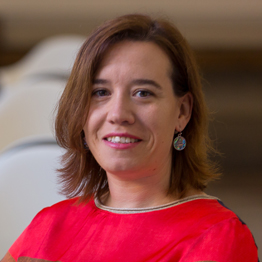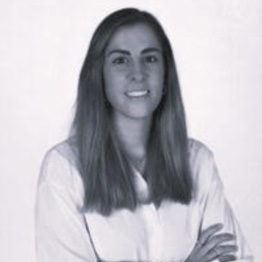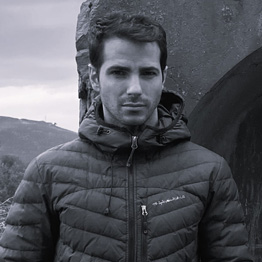
DISARQ
Contributions from architecture to the theory, pedagogy and knowledge dissemination of design Spanish (1925-1975)
The project proposes to investigate the contribution of the architect in the process of conformation of the design as an independent discipline in Spain in the period 1925-1975 from the theoretical, pedagogical and divulgation fields.
The field of design in general, and industrial in particular, did not emerge in Spain as an independent discipline until almost the last third of the twentieth century. In the beginning, agents from different spheres intervened, from the creative to the industrial, passing through art or politics. The architect played an essential role, as he carried out a work of assimilation of the currents of his environment and dissemination of the new lines of work. The starting hypothesis is that there is a latent theoretical corpus elaborated by architects, together with other professionals, which has not been analyzed so far. This corpus would have largely defined the Spanish design , would have favored its appearance as an independent discipline and would have helped to assimilate the modern language.
The general objectives of project are:

To highlight the theoretical and intellectual, pedagogical and informative work led between 1925 and 1975 by the architect at partnership with professionals from the fields of industry, art and decoration.

To bring together and evaluate all the theoretical, pedagogical and informative contributions made by this group.

To bring to light the intellectual role of women as creators and drivers of change in everyday objects.
Team
María Villanueva Fernández
researcher principal
Associate Professor, Theory, Projects and Urban Planning. University of Navarra
Héctor García-Diego Vallarías
researcher principal
Senior Associate Professor , Theory, Projects and Urbanism. University of Navarra
Jorge Tárrago Mingo
Senior Associate ProfessorTheory, Projects and Urban Planning. University of Navarra
Raquel Cascales Tornel
Professor teaching assistant Doctor, Theory, Projects and Urban Planning. University of Navarra
Javier Sáez Gastearena
Professor teaching assistant Doctor, Theory, Projects and Urbanism. University of Navarra
Course 2025-2026
5TH ARCHITECTURE
- María Fernández Sangil
- Carmen Sánchez de Lamadrid Álvarez
- Belén Santiago Díez
- Cristina Olábarri Meseguer
4º ARCHITECTURE
- Clara Nadal Esquena
- Laura López Tena
- Marcos Urcola Vidal
4º DESIGN
- Mariana Leon-Pantin
- María de los Ángeles Ventura Vargas
5TH ARCHITECTURE
- María Sofía Orihuela Martínez-Costa
- Belén Recarte Tolosana
4º ARCHITECTURE
- Juan Carlos Eguigurems Orellana
- Crisitina Olábarri
- María Fernández Sangil
- Carmen Sánchez De Lamadrid Álvarez
4º DESIGN
- Lucía Andonegui
- Celia García Rubio
3RD ARCHITECTURE
- Laura López Tena
- Clara Nadal Esquena
- Elena Schmidt
- Marta Urcelay San Román
- Marcos Urcola Vidal
Results
![]() The transforming power of the aesthetics of everyday life
The transforming power of the aesthetics of everyday life
Authors: Raquel Cascales, M* Jesús Godoy Domínguez
Magazine: yearbook Filosófico
Year: 2025
Images n.: 1, 2 (annex)
ISSN: 0066-5215 (if available)
Abstract:
"The aesthetics of the everyday, which emerged at the end of the 20th century, extends aesthetics beyond art to everyday experiences. Initiated in the Anglo-Saxon sphere, this subdiscipline is expanding in Europe, as this first monograph in Spanish sample . The contributions, from core topic figures of the discipline, delve into the fundamentals and highlight its inclusive and transformative, theoretical and practical potential, consolidating it as one of the most promising disciplines of contemporary aesthetics."
![]() Loewe in London (1963-1966): Modernity, tradition and Spanish cultural roots.
Loewe in London (1963-1966): Modernity, tradition and Spanish cultural roots.
Authors: María Villanueva Fernández, María Eugenia Josa Martínez
Magazine: Constelaciones
Year: 2025
Images n.: 3, 4 (annex)
ISSN:2340-177X (if available)
Abstract:
"In the 1950s and 1960s there was a substantial increase in the issue of commercial premises designed by architects and published in the media. Among them, those designed by Javier Carvajal for Loewe between 1959-1966 stood out, which, beyond being remarkable projects for their exquisite level of design, became an example of modernization of commerce through architecture and the dialogue between modernity, tradition and Spanish culture".
![]() Domesticity in Times of Crisis: Peter G. Harnden's house in Orgeval: Modern Hybrid Transatlantic Interiors.
Domesticity in Times of Crisis: Peter G. Harnden's house in Orgeval: Modern Hybrid Transatlantic Interiors.
Authors: Héctor García-Diego Villarías and María Villanueva Fernández
Magazine: DOCOMOMO International
Year: 2025
Images n.: 4, 5 (annex)
ISSN: 1380-3204 (if available)
Abstract:
"In 1952, both the French magazine L'Architecture d'Aujourd'hui and the Italian magazine Domus published a small house built by an American architect on the outskirts of Paris for his staff use. The outsider they highlighted was Peter G. Harnden, the architect who directed the American propaganda campaigns in Europe in the post-war period. ... Consequently, in this work, the American architect would interweave architecture and domesticity in post-war Europe through the combination of respect for a well-understood tradition and the materialistic world typical of his place of origin. This, in part, helps to understand the exoticism with which the magazines mentioned this project. The study and analysis of this hardly known case include its deliberate diffusion and propagandistic impact, in which the design of the interior space is crucial in a context of crisis and emergency in devastated Europe."
![]() "The symbolic dimension of contemporary Basque furniture: Identity, avant-garde and cultural capital"- Mercedes Ramírez Caballín - Bilbao, 11-14/06/2025.
"The symbolic dimension of contemporary Basque furniture: Identity, avant-garde and cultural capital"- Mercedes Ramírez Caballín - Bilbao, 11-14/06/2025.
Abstract
"During the 1950s and 1960s, furniture design in the Basque Country became a symbol of cultural identity and modernity. Far from being just functional objects, many pieces created by Basque designers at this time reflected a fusion between art, sculpture and industrial design . core topic figures such as Agustín Ibarrola, Jorge Oteiza and Eduardo Chillida, took furniture beyond the utilitarian, transforming it into an expression of avant-garde and innovation. The paper sheds light on this chapter of history by trying to show the impact of industrial design on the Basque cultural identity of furniture as a symbol of status and modernization. Through the analysis of these cases, it seeks to highlight how these designers challenged the norms of traditional design by introducing new forms, materials and concepts that reflected their commitment to artistic experimentation and cultural identity. It was a declaration of principles, an artistic experimentation and a reflection of the modernization of Basque society. His pieces not only furnished spaces, but built an identity and a new way of understanding design."
![]() "From cabins to lounges: modernity, furniture and social status in the transports of the interwar period" - María Villanueva Fernández, Héctor García-Diego Villarías - Bilbao, 11-14/06/2025.
"From cabins to lounges: modernity, furniture and social status in the transports of the interwar period" - María Villanueva Fernández, Héctor García-Diego Villarías - Bilbao, 11-14/06/2025.
Abstract
"After World War I, profound social changes transformed living habits, driving the development of spaces and furniture for leisure and, at the same time, experimentation with minimal living spaces. This context coincided with technical advances that led to a great development in the field of transportation (trains, ships and airships).
In these "mobile architectures," leisure (restaurants, cabarets) and limited space ( class cabins) merged and captivated architects and decorators who actively participated in the configuration of these interiors and in the design the furniture.
The architectural magazines of the time reflected this duality. On the one hand, they documented the luxury of art deco furnishings for the conservative upper class and, on the other, they showed the austerity and functionality of modern equipment for class cabins and other new types of transportation.
This research is based on the analysis of articles on interior design and transport furniture published in Spanish magazines of the 1930s. Its goal is to demonstrate how transport furniture became a symbol of culture, social status and modernity, evidencing its role in the changing lifestyles and social rituals of the time."
The V International congress Culture and City (Granada, June 16-18, 2025) was organized by the area of Architectural Composition of the University of Granada and the research project of the National Plan and directed by Professors David Arredondo Garrido and Juan Calatrava "Food and City. From the domestic to the public space. Elements for a history, arguments for the contemporary project (FoodCity)" PDI2020-115039GB-I00.
The congress set itself the fundamental goal of promoting research that explores the intersections between food, architecture and the city, in the conviction that such an approach can generate a richer and more articulated knowledge than the simple sum of isolated perspectives.
The structure of the Issue is organized around three fundamental scales of analysis: the domestic sphere, the intermediate urban spaces and the territory, to which is added a final block dedicated to the cultural representations that link and project these worlds.
![]() The international design "of eating" imported to Spain through the magazine Muebles + Decoración (1958-1974) - Pablo Arza Garaloces, María Villanueva Fernández, Héctor García-Diego Villarías - Granada, 16-18/06/2025
The international design "of eating" imported to Spain through the magazine Muebles + Decoración (1958-1974) - Pablo Arza Garaloces, María Villanueva Fernández, Héctor García-Diego Villarías - Granada, 16-18/06/2025
Abstract
In 1958 the first issue of Muebles + Decoración magazine was published in Spain. Founded by Robert Kohlhammer, it is the Spanish version of the German Moebel Interior Design. In the Spanish context, its appearance in 1958 is no coincidence. Since the 1950s, several architects had been developing a series of initiatives in favor of interior design and renovation in the country, with the aim of consolidating discipline in Spain. In this sense, editorial projects such as the magazine Muebles + Decoración were a fundamental channel for keeping up to date with international design trends, particularly in the domestic space. A field to which many professionals have directed their efforts, with a special focus on interiors, furniture and objects related to the food business. These have a strong protagonism in Muebles + Decoración. Throughout the 1960s, the magazine offers a valuable look abroad in a core topic for the configuration of domestic design in Spain. The communication aims to analyze this episode, focusing on the contribution of this medium to the updating of Spanish 'eating' design .
The first issue of Muebles + Decoración magazine was published in Spain in 1958. Founded by Robert Kohlhammer, it is the Spanish version of the German Moebel Interior Design. In the Spanish context, its appearance in 1958 is no coincidence. Since the 1950s, several architects had been developing a series of initiatives in favor of design in the country, with the aim of consolidating the discipline in Spain. In this sense, publishing house projects such as the magazine Muebles + Decoración were a fundamental channel for keeping up to date with international trends in design and, in particular, in the domestic space. A field to which many professionals have directed their efforts, with a special focus on interiors, furniture and objects related to the food activity. These have a marked prominence in Muebles + Decoración. Throughout the 1960s, the magazine offers a valuable look abroad at a key moment in the shaping of domestic design in Spain. This paper sets out to analyze this episode, focusing on the contribution of this medium to the updating of Spanish design 'for eating'.
![]() The art of the table and the diffusion of "good design" in Spain in the 1950s - María Villanueva Fernández, Héctor García-Diego Villarías, Pablo Arza Garaloces - Granada, 16-18/06/2025
The art of the table and the diffusion of "good design" in Spain in the 1950s - María Villanueva Fernández, Héctor García-Diego Villarías, Pablo Arza Garaloces - Granada, 16-18/06/2025
Abstract
This paper analyzes the work of the architect in the design of objects related to cooking and eating in Spain in the 1950s, as well as the initiatives linked to their promotion and their presence in national architectural periodicals. To this end, the contents of the Revista Nacional de Arquitectura/Arquitectura and Cuadernos de Arquitectura have been analyzed, as they were a reference at the time and living testimonies of the events that took place. Specifically, a study was carried out both of the theoretical articles on the discipline of industrial design , and of all the articles in which quotations appeared or presented images of objects related to the art of the table. For this analysis, tableware objects were taken into account, excluding furniture. The data found on these objects, both national and international, allow us to gauge their role in the training of Spanish material culture of the period, as well as in the diffusion of the ideals of modernity and functionality. In addition, the development the designs and debates published in these media are proof of the influence they exerted in the consolidation of a new model of home, and in the promotion of an accessible and quality design for all social strata.
This paper analyses the architect's work in the design of objects related to cooking and eating in Spain in the 1950s, as well as the initiatives linked to their promotion and their presence in national architectural periodicals. To this end, the contents of the Revista Nacional de Arquitectura/Arquitectura and Cuadernos de Arquitectura have been analyzed, as they were a reference at the time and living testimonies of the events that took place. Specifically, a study has been carried out of both the theoretical articles on the discipline of industrial design, as well as all the articles in which quotes appeared or presented images of objects related to the art of the table. For this analysis, tableware objects have been considered, excluding furniture. The data found on these objects, both national and international, allow us to gauge their role in the formation of the Spanish material culture of the time, as well as in the diffusion of the ideals of modernity and functionality. Furthermore, the development of the designs and debates published in these average, confirm in themselves the influence they exerted in the consolidation of a new model of home, and in the promotion of an accessible and quality design for all social strata.
![]() The international design "of eating" imported to Spain through the magazine Muebles + Decoración (1958-1974) - Pablo Arza Garaloces, María Villanueva Fernández, Héctor García-Diego Villarías - conference proceedings V CCyC - publishing house Universidad de Granada- 2025
The international design "of eating" imported to Spain through the magazine Muebles + Decoración (1958-1974) - Pablo Arza Garaloces, María Villanueva Fernández, Héctor García-Diego Villarías - conference proceedings V CCyC - publishing house Universidad de Granada- 2025
![]() The art of the table and the diffusion of "good design" in Spain in the 1950s - María Villanueva Fernández, Héctor García-Diego Villarías, Pablo Arza Garaloces - Authors - conference proceedings V CCyC - publishing house Universidad de Granada - 2025
The art of the table and the diffusion of "good design" in Spain in the 1950s - María Villanueva Fernández, Héctor García-Diego Villarías, Pablo Arza Garaloces - Authors - conference proceedings V CCyC - publishing house Universidad de Granada - 2025
- Ana Ximena Rodriguez Frasco - The House Environments: EXCO 1960 digital report Tutor: Héctor García-Diego Villarías)
- Clara Natalia Puig Horstmann - On the design of Spanish architects through Cuadernos de Arquitectura (1944-1975) (Tutor: María Villanueva Fernández)
- Camila Alejandra Freire Herrera - Furniture and background: subject of the exhibitions in Spain 1950-1965Tutor: Marta García Alonso)
- Tomás Zaldúa - Alternative diffusions. The reception of architecture through non-disciplinary media: The case of Blanco y Negro 1925-1975Tutor: Jorge Tárrago Mingo)
The workshop presented the results of the first year of the project, highlighting how architects contributed to the consolidation of design as a discipline in Spain from 1925 to 1975. Spanish design was approached from different media (architectural magazines, semi-professional and non-professional, and books) and perspectives (from aesthetics, business or women designers) with the goal of advancing in the search for a Spanish theoretical corpus on design and to propose the second phase of the project, focused on the analysis of the data obtained, also highlighting the intellectual and pedagogical work of women in this process.
News and activities

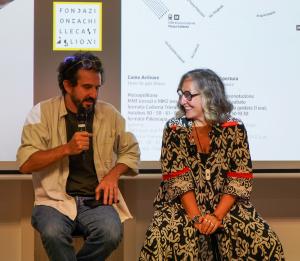
V Ibero-American congress on the History of Furniture from June 11 to 14, 2025 at the Bizkaia Aretoa in Bilbao. Under the topic "Furniture as cultural capital", the meeting explored the role of furniture as a symbol of power and social status, addressing its historical, technical, artistic and social dimensions.
The University of Granada organized the V International congress Culture and City, graduate "Food and Architecture: House, Street, Territory", from June 16 to 18, 2025 at the ETS of Architecture of Granada. The congress addressed the role of food in four areas: house, street, territory and cultural representations.
The sample, curated by Professor Víctor Larripa, took place from September 15 to 22, 2025 in the entrance hall of the Escuela Técnica Superior de Arquitectura and brought together a selection of emblematic pieces by the Italian designer and architect Achille Castiglioni -among them the Luminator lamp (1955), the Mezzadro chair (1971) and the Cumano table (1977).
The exhibition is part of the DISARQ project (PID2023-153253NA-I00) as a knowledge dissemination action that connects research, teaching and design culture.
Giovanna Castiglioni, daughter of Italian designer and architect Achille Castiglioni, reflected on her father's creative bequest , his reflective and playful method, and the importance of observing everyday life as a starting point for design. After the lecture Giovanna Castiglioni, Francesco Faccin and Victor Larripa shared their reflections in the Design Talk.
2026: Tuesday, March 24 and Thursday, March 26. classroom 35, Central Building, 17:30-19:30h.
Taught by María Villanueva Fernández and Héctor García-Diego Villarías, this course is part of the Senior Program of the University of Navarra, an initiative aimed at the continuous cultural training of adults interested in expanding their knowledge in the field of art, history and contemporary culture.
The course "design and Art 20th Century" proposes a journey through the main currents of design and its dialogue with the visual arts throughout the last century. Through examples of furniture, architecture, fashion and everyday objects, the links between artistic internship and modern design thinking are analyzed, as well as their influence on the configuration of contemporary domestic and urban life.
2025: Saturday, May 31, 10:30 am.
The University of Navarra Museum hosted the children's workshop "Designing stars", an activity directed by professors María Villanueva Fernández, Mercedes Ramírez Caballín and Héctor García-Diego Villarías, with the partnership of students Lucía Andonegui, Celia García Rubio, Laura López Tena, Marta Urcelay San Román and Marcos Urcola Vidal.
Held on Saturday, May 31, 2025, the workshop invited children to discover the creative process of design through form and light. Participants explored how ideas can be materialized into objects by experimenting with simple materials, encouraging observation, imagination and collaborative work .
This activity is part of the knowledge dissemination actions of the DISARQ project , aimed at bringing the culture of design and architecture to audiences of different ages.
In the framework of the subject Architectural Criticism, the students of the fourth year of the Degree in Architecture programs of study have developed a series of critical essays in pairs, focused on the figure of an architect, designer or relevant movement -from Arts and Crafts to contemporary design .
Through these works, the student body has reflected on the role of design as an agent of cultural transformation, analyzing its impact on the configuration of inhabited spaces and the construction of everyday life. The activity fosters the capacity for argumentation, a critical eye and dialogue between the history of design and the current architectural internship .
The workshop presented the results of the first year of the project, highlighting how architects contributed to the consolidation of design as a discipline in Spain from 1925 to 1975.
Professor Yiqiang Cao gave a lecture on the concept of taste in global art history, in which he addressed the issue of taste in the creative disciplines. To do so, he used as reference letter oldest surviving Chinese text, from the 5th century: "On the Quality of Ancient Paintings."
The session is part ofproject , funded by MCIN/AEI/10.13039/501100011033 and by FEDER, EU, and has been organized in partnership ART T&H (Architectural Research Team: Theory and History).




